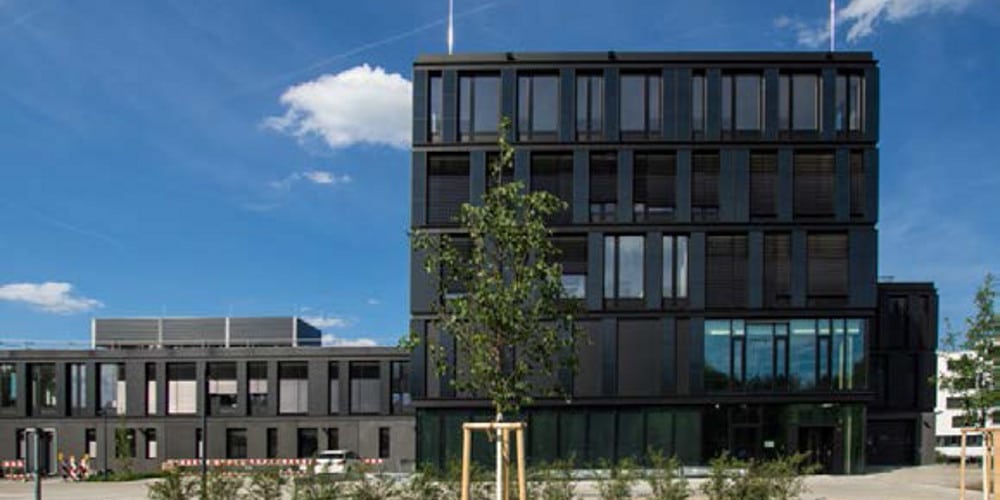From pv magazine Germany
How much of the electricity needs of an office building can be met with a photovoltaic system installed on-site? A group of researchers at the Center for Solar Energy and Hydrogen Research Baden-Württemberg (ZSW), in Germany, is now seeking to give an answer to this question by using its own data, coming from a PV facade and a rooftop array based on CIGS module that are installed on its building in Stuttgart.
The scientists transferred the yield data into a model and found that the electricity from the roof and facade modules can cover almost 40% of the total requirements of a standard office building, assuming that no battery storage is installed.
The researchers based their modeling on a typical five-floor administrative building. Assuming that a quarter of the entire facade and 30% of the roof area are covered with photovoltaics, the PV system should have an installed power of 131 kW and generate around 115,000 kWh of electricity per year.
“The facades alone provided 29% of the electricity consumed over a period of one year,” explained Dieter Geyer, project manager at ZSW. Around 80% of the generated solar power could be used for this purpose, the rest of the system can be fed into the power grid. “The combination of photovoltaics on the facade and on the roof even increased the self-sufficiency share to 39%,” says Geyer, adding that about 58% of the produced solar power can be used locally.
Popular content
Photovoltaic facades provide a lot of electricity in winter
The high self-consumption rate is possible without battery storage. “This is due to the fact that office buildings mainly need electricity during the day, so a good part of the solar power generated can be used immediately throughout the day,” said Geyer. In addition, with a suitable orientation, solar facades generate electricity primarily in the morning and evening hours, whereas the roof systems primarily generate electricity at midday. There is a permanently high supply of solar power in the consumption-intensive period between 8 a.m. and 6 p.m.
According to the ZSW, roof and facade systems also go well with each other across the seasons: while the highest performance values for the roof system occur, as expected, in the summer months, the photovoltaic facade ideally complements the annual generation profile, with its highest output during the winter months. Facade systems make better use of the low sun in winter than roof systems, due to their vertical alignment.
In addition to generating electricity, photovoltaic facades offer other advantages, according to the ZSW. They protect them from wind and weather, provide shade, reduce heat losses and replace conventional components. Last but not least, according to the German scientists, they have a sound-insulating effect.
This content is protected by copyright and may not be reused. If you want to cooperate with us and would like to reuse some of our content, please contact: editors@pv-magazine.com.


1 comment
By submitting this form you agree to pv magazine using your data for the purposes of publishing your comment.
Your personal data will only be disclosed or otherwise transmitted to third parties for the purposes of spam filtering or if this is necessary for technical maintenance of the website. Any other transfer to third parties will not take place unless this is justified on the basis of applicable data protection regulations or if pv magazine is legally obliged to do so.
You may revoke this consent at any time with effect for the future, in which case your personal data will be deleted immediately. Otherwise, your data will be deleted if pv magazine has processed your request or the purpose of data storage is fulfilled.
Further information on data privacy can be found in our Data Protection Policy.